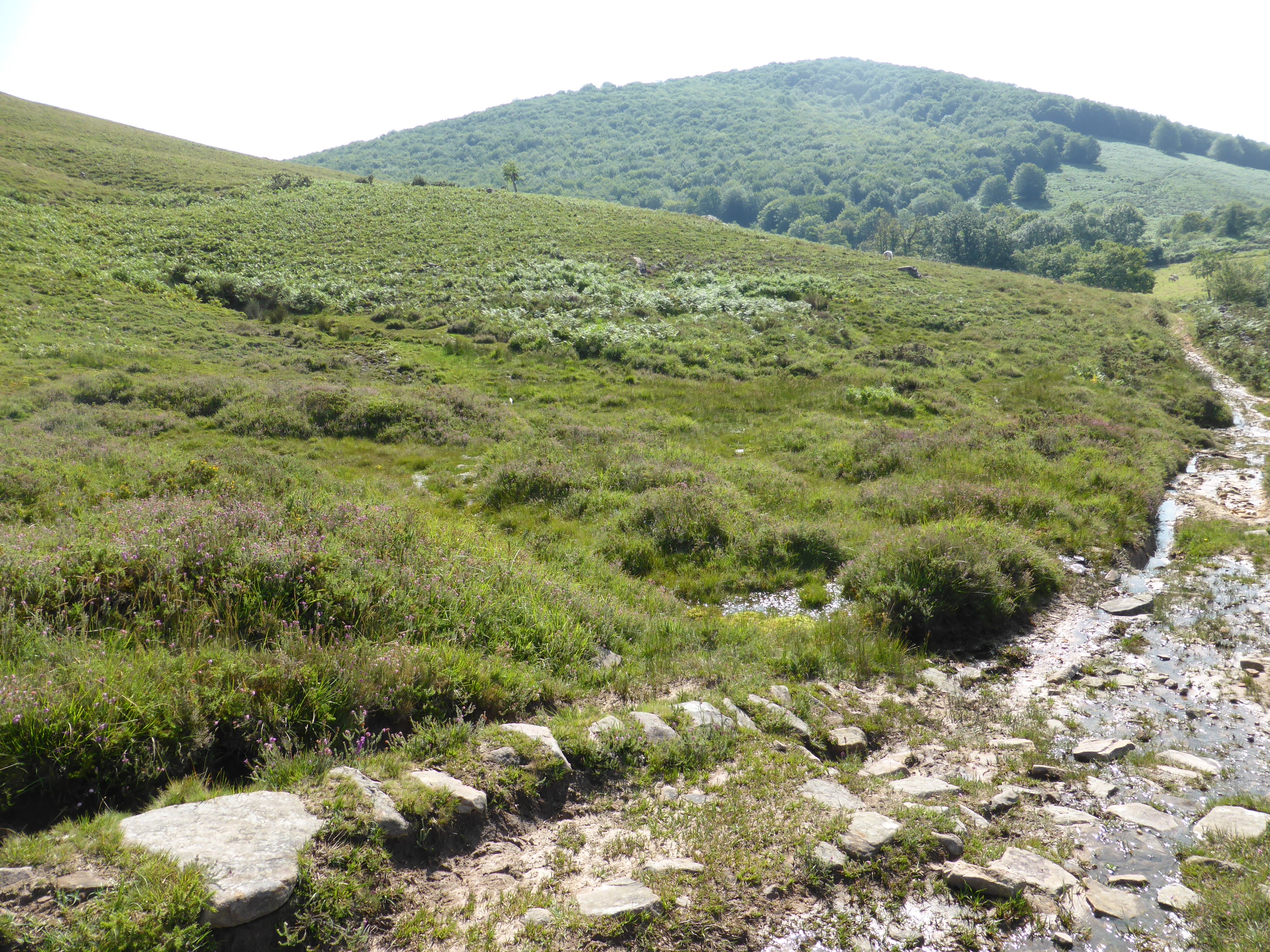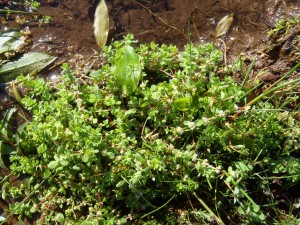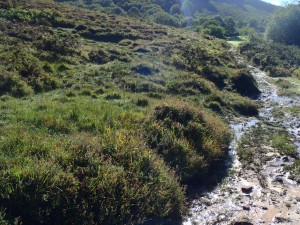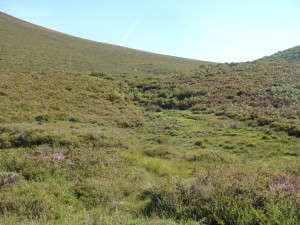Name of the site: Maulitx
Protection categories: Listed as Protected Non-developable Land due to its Environmental Value, Wetlands, in Navarre’s Land Planning Programme 2 “Atlantic Navarre”.
Location: Baztan
Region: Navarre
Coordinate reference: 30TXN2377, 30TXN2477
Surface area of the wetland: 3.06 hectares
Altitude: 610-650 m

This site is located in the municipality of Baztan and covers 3.06 ha. It has several, varyingly diffuse outflows and its flow channels on the slopes lead to a stream at the bottom of the gully.
It has two chief zones of flowing spring water, which emerge from vegetation dominated by heath consisting of Erica tetralix in a mosaic with Agrostis curtisii grasslands.
The site has two distinct zones:
One is larger, more diverse and more complex. Different zones of waterlogged soil can be identified in this area, in which heath prevails on the dry soil:
- Zone in which the most alkaline outflow is located, with species such as Illecebrum verticillatum, Juncus bulbosus, Ranunculus flammula, Anagallis tenella, Philonotis fontana, Bryum pseudotriquetrum, Hypericum elodes, Stellaria alsine, Carex demissa (highly grazed), Eleocharis multicaulis, Montia fontana, Carex echinata and Potamogeton polygonifolius. The spring and its flow channel are edged with a fairly unstructured reed bed made up of Juncus effusus, Sphagnum auriculatum and Wahlenbergia hederacea. At the exit from this zone, alongside the track, there is a population of Pinguicula lusitanica.
- Zone with two or three extremely diffuse spring outflows, whose flow channels finally join up and then meet up with the channel from the previous sub-zone. In the zones in which water emerges diffusely, one can find Rhynchospora fusca and Lycopodiella inundata. In the network of channels, promontories displaying ombrotrophication have formed, with Racomitrium lanuginosum, Leucobryum glaucum and Sphagnum spp. This sub-zone is suddenly sectioned at its southeast boundary by a track.
- Zone of fairly inactive and, consequently, barely visible spring flows. There is a population of Lycopodiella inundata and shallow grassland consisting of Eleocharis multicaulis and Narthecium ossifragum. The edges towards the heath are covered with Sphagnum compactum. It does not cover a large area and fails to reach the main stream in the gully.
- Zone in which the stream created by the channels from the previous zones descends in a fairly diffuse manner over the fenced-off meadow lower down, after crossing the track, until it reaches the stream in the main gully, with a community of Narthecium ossifragum and Sphagnum auriculatum, with promontories and small channels with Hypericum elodes in amongst it.
Another area with a well defined spring outflow and other fairly inactive points, one of which is rather eutrophic, with a population of Campylium stellatum growing in the middle. The flow channel from this outflow leads to an extremely waterlogged area, partly dammed off by the incline of the track and home to a small population of Lycopodiella inundata and mats of Sphagnum spp.
From the perspective of Habitats of Community Interest, the area stands out because it has a significant representation of Habitat 7150, which includes the primocolonizing communities specific to mire.
- MOST IMPORTANT VALUES
Uniqueness
There is a significant presence of species that colonise waterlogged soil in Maulitx.Biological and ecological values
In terms of vascular flora, one of the extremely rare populations of Rhynchospora fusca found on the Iberian peninsula is noteworthy. Other relevant species include Lycopodiella inundata, Illecebrum verticillatum and Pinguicula lusitanica (the last two listed, respectively, as vulnerable and sensitive to changes in its habitat in the Catalogue of Navarre). As for bryophytes, the presence of hepatics typical to mire environments, such as Odontoschisma sphagni and Kurzia pauciflora, and the large number of sphagnums, with seven species, are relevant.Historical and paleoecological values
The peat-forming habitats in Maulitx do not possess significant deposits from a paleoecological point of view.Habitats of Community Interest
Hábitat Nombre 4020* Brezales húmedos atlánticos de zonas templadas de Erica cillaris y Erica tetralix 4030 Brezales secos europeos 6230* Formaciones herbosas con Nardus, con numerosas especies, sobre sustratos silíceos de zonas montañosas (y de zonas submontañosas de la Europa continental) 6410 Prados con molinias sobre sustratos calcáreos, turbosos o arcillo-limónicos (Molinion caeruleae) 7140 «Mires» de transición 7150 Depresiones sobre sustratos turbosos del Rhynchosporion Flora
64 species of vascular plant and 23 bryophyte species have been recorded.Of the vascular species found in Maulitx, the most noteworthy are several pioneer species in waterlogged sandy soils, such as Rhynchospora alba, R. fusca, Lycopodiella inundata, Illecebrum verticillatum and Pinguicula lusitanica. Pinguicula lusitanica is listed as “sensitive to changes in its habitat” in the Catalogue of Endangered Flora in Navarre, while Illecebrum verticillatum is listed as “vulnerable”. Lycopodiella inundata is listed in Annex V of the Habitats Directive.
In terms of bryophytes, the presence of hepatics typical to mires, such as Odontoschisma sphagni and Kurzia pauciflora, and the large number of sphagnums, with seven species, are relevant.
Fauna
Specific information regarding the fauna at the Maulitx mire is not available.- PHOTOS
-





